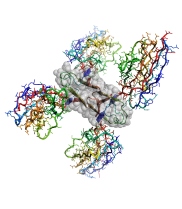One step closer to a blood test for Alzheimer’s
They identified blood-based biological markers that are associated with the build up of a toxic protein in the brain which occurs years before symptoms appear and irreversible brain damage has occurred.
“Early detection is critical if we are to make any real difference in the battle against Alzheimer’s, giving those at risk a much better chance of receiving treatment earlier, before it’s too late to do much about it,” said Dr Samantha Burnham from CSIRO’s Preventative Health Flagship.
Alzheimer’s is the leading cause of dementia. One quarter of a million Australians currently suffer from dementia and given our ageing population, this is predicted to increase to one million people by 2050.
The results have been published today in the journal Molecular Psychiatry.
Sophisticated mathematical models were used to analyse data from 273 participants in the Australian Imaging, Biomarkers and Lifestyle study of ageing (AIBL).
This identified nine markers that correlate with brain positron emission tomography (PET) imaging measurements of a toxic protein, amyloid beta, which deposits in the brain as plaques early in disease development.
“The progressive build up of the toxic protein, amyloid beta, is one of the earliest changes in the brain associated with the development of Alzheimer’s disease,” said Dr Noel Faux, from the Florey Institute for Neuroscience and Mental Health.
“A recent study from the AIBL team showed that amyloid beta levels become abnormal about 17 years before dementia symptoms appear. This gives us a much longer time to intervene to try to slow disease progression if we are able to detect cases early.”
Dr Burnham adds “We hope our continued research will lead to the development of a low cost, minimally invasive population based screening test for Alzheimer’s.”
“A blood test would be the ideal first stage to help identify many more people at risk before a diagnosis is confirmed with cognitive tests and PET imaging or cerebral spinal fluid (CSF) testing.”
The results have been published in the journal Molecular Psychiatry.
Media Resources
Click image for high resolution version



